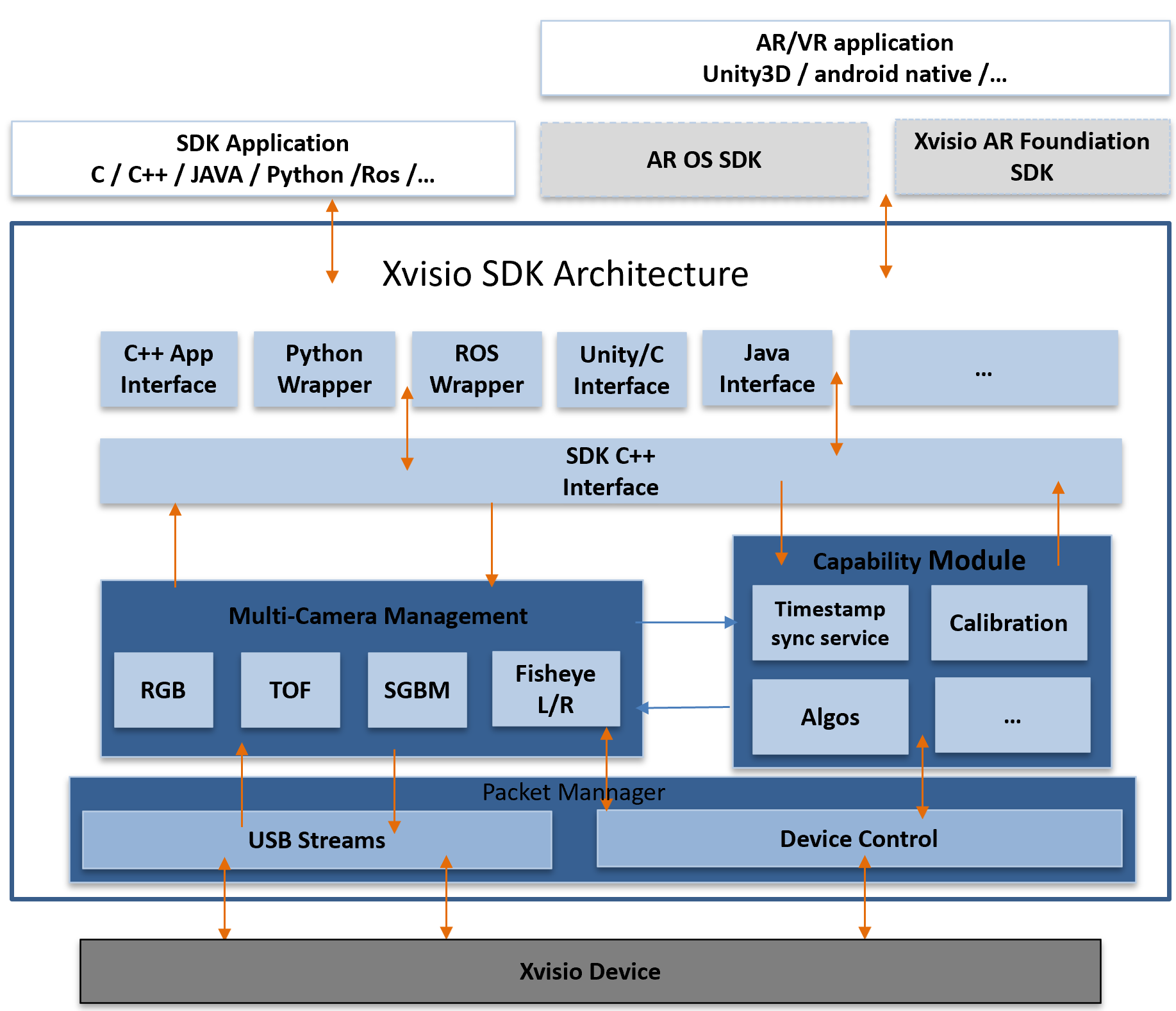← Xvisio SDK Documentation Home Page
Introduction
WELCOME
Xvisio SDK provides application development APIs for you to use Xvisio robot vision modules and AR/VR devices. You can build and implement the functions of Xvisio devices through SDK. These include functional services such as VSLAM、multi-modal depth engine、 RGB camera、 AI engine etc. In this section we will introduce you to the architecture of the Xvisio SDK.
Xvisio SDK Architecture
SDK application development is divided into basic SDK applications and AR/VR device applications. Basic SDK applications directly call APIs provided by Xvisio SDK or various wrappers to implement corresponding functions; applications of AR/VR devices generally need to be based on 3D rendering engines, such as Unity3D, Ureal, etc., and use AR OS SDK or Xvisio AR Foundiation SDK Indirect calls to Xvisio SDK APIs. AR OS SDK and Xvisio AR Foundiation SDK include platform or operating system-related optimization packages and AR/VR display optimization components, etc. The related introductions are introduced in other service pages, and only the Xvisio SDK will be introduced here.
Core components
"Multi-Camera Management" is the core component of Xvisio SDK, which is responsible for multi-camera control and data payload management, and management of multiple functional algorithm engine services from Xvisio Device.
The "Packet Manager" component maintains an abstraction layer "USB Streams" responsible for controlling and processing USB data streams from the xvisio device side.There is also a "Device Control" module which is responsible for device control and interaction.
The "Capability Moudle" component includes "Timestamp sync service", "Calibration function module", "Algorithm Collection", etc. The "Algorithm Collection" includes various algorithm engines fully or partially implemented in the SDK , such as VSLAM related services, RGBD, depth point cloud, 3D mesh, and other services.

AR Glasses SDK
User needs to refer to XR Application Development Manual for developing AR applications which based on the special box kit of SeerLens™ One AR Glasses. The SDK interface functions described in other sections are not applicable for developing AR application directly. It is more suitable for native development or module product development. Please contact Xvisio FAE for futher development requirements.
Release Process
Xvisio SDK pass validation and stability cycles.Every SDK release is going through several levels of validation, from automated unit-tests to longer validation cycles.
Latest Release SDK Directory
Historical Release SDK Directory
SDK Supported Features Matrix
Please check the SDK Features Matrix。
Note: The Features matrix of the SDK only represents the Features of the SDK. The actual supported Features are also related to the Features supported by the Xvisio hardware device. Please also check the Featur list of the device you are using.
← Xvisio SDK Documentation Home Page